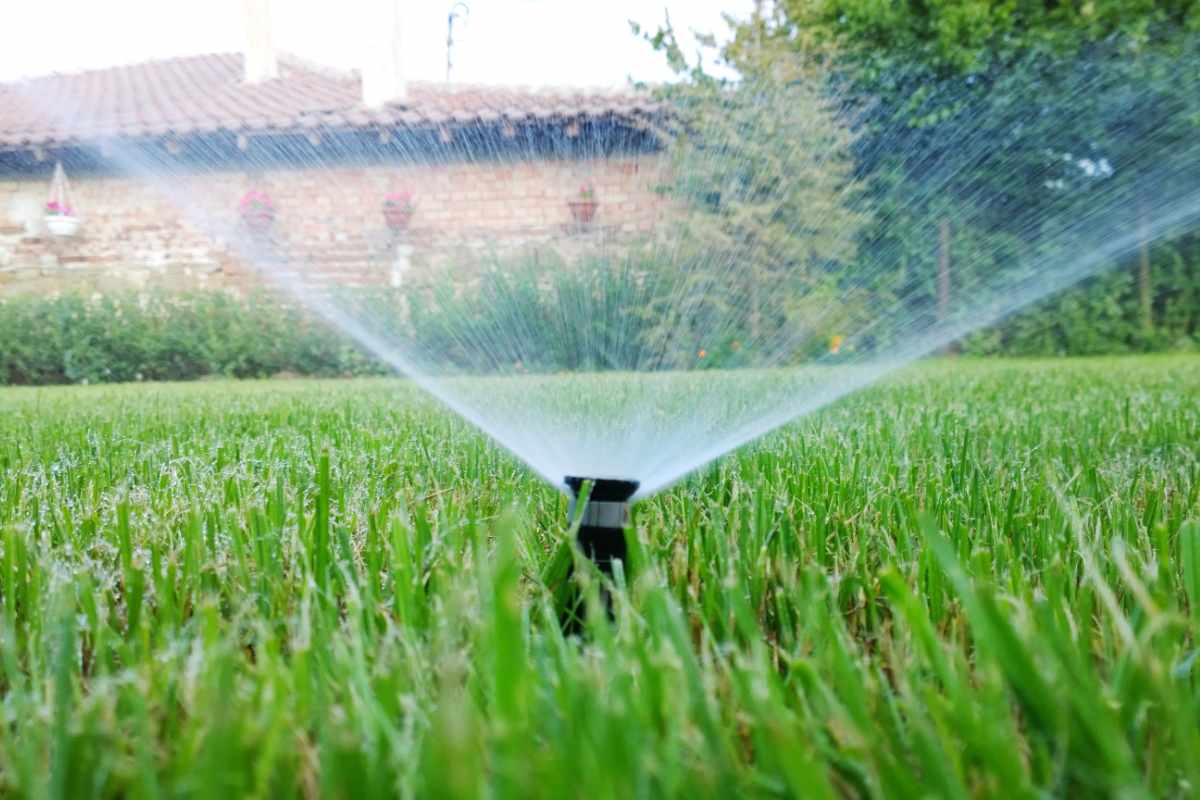
When it comes to watering your grass, timing is everything. It can mean the difference between a drab and fab lawn and significantly impact the health of your turf. So when exactly is the best time to water your grass?
Knowing how long, how often, and how much to water your grass is key to caring for it correctly. Check out some helpful techniques you can implement to make your life easier and your lawn spectacular.
When Should You Water Your Grass?
The best time of day to water your grass is between 5 a.m. and 9 a.m. when wind and evaporation are less likely. This allows the water to penetrate the soil and reach the roots. It also gives the excess water left on the foliage time to dry quickly, which reduces the risk of fungal lawn diseases.
Your next best option to reduce the likelihood of evaporation is watering in the evening, around 6 p.m. However, this doesn’t come without risks; without the sun to evaporate excess water, you run the risk of attracting brown patch fungus, melting-out, and dollar spot to name a few diseases.
If you must water in the evening, a drip irrigation system can help. It targets the grassroots directly without touching the foliage. Even so, aim for a morning watering routine to give your grass the best chance at growing and staying healthy.
Pro tip: Try not to water your lawn between 10 a.m. and about 4 p.m. During this time, most of the water will be lost to evaporation before it can soak into the soil, wasting water and leaving your grass thirsty.
How Long Should You Water Your Grass?
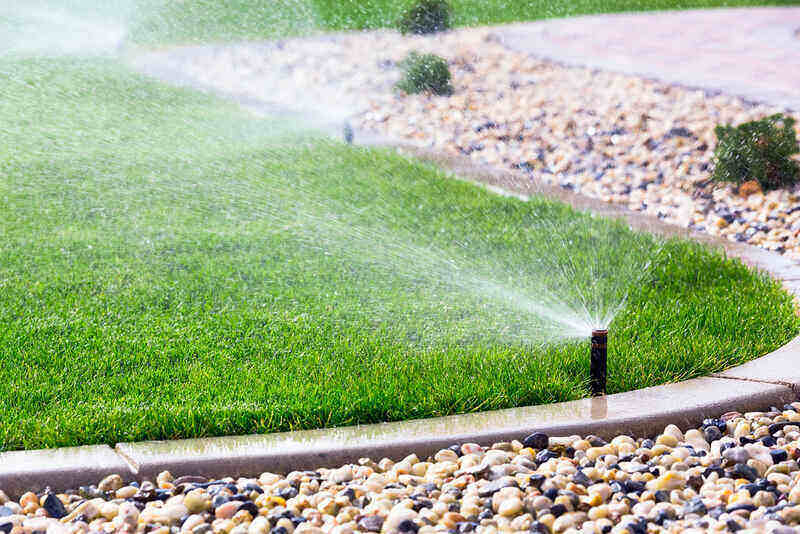
It typically takes about 30 minutes to accumulate half an inch of water, which is how much you should water the lawn during each session. If you want to determine exactly how long it takes your sprinklers to accumulate this amount, use the tuna can test:
- Step 1 – Place small, shallow containers around your lawn, such as empty tuna cans.
- Step 2 – Turn on your sprinklers and set a timer for 30 minutes.
- Step 3 – At the end of the 30 minutes, measure the amount of water in each can with a ruler. Find the average amount of water across all the cans, and that’s about how much water your sprinkler supplies in 30 minutes.
- Step 4 – Adjust your watering time according to the results. If you found the average amount of water in each can was about half an inch, you’re good to water your lawn for 30 minutes each session. If the average was less than half an inch, you’ll need to leave the sprinklers on longer. If it was more, you’ll need to turn them off sooner.
How Often Should You Water Your Grass?
Since it takes about 30 minutes to accumulate half an inch of water, water your grass two to three times a week for 30 minutes each to reach the ideal of 1 to 1.5 inches. The soil should be moist up to a depth of 6 to 8 inches.
Remember that the required amount of water includes natural precipitation. If you get heavy rainfall several times a week, you may only have to water your lawn once, if at all. Stay on top of the weather and adjust your watering schedule as needed.
It’s essential to water your lawn less often but for longer periods. This method encourages the grassroots to search for moisture, resulting in a robust and deep root system. In contrast, watering too often for short periods promotes a shallow and weak root system that can’t withstand drought.
How to Water Your Grass Effectively
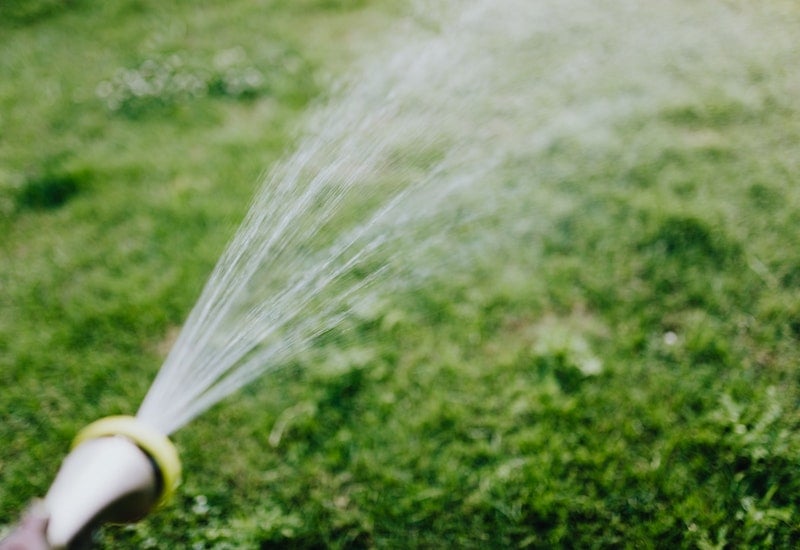
To get the most out of your time spent irrigating, keep these aspects in mind:
Water According to Grass Maturity
Established grass needs two to three waterings a week. As long as you follow the recommended amount for your grass type, this lawn care task should be relatively low-maintenance.
In a newly seeded cool-season lawn, the top 1.5 inches of soil should be kept moist (not soggy) for between 5 and 10 days, which is how long the germination period lasts. If you have warm-season grass, you may have to water the new seeds for up to two or three weeks, depending on the type.
Water new grass seeds once or twice daily with a gentle spray or mist to prevent displacing the seeds and flooding your lawn. Use a light touch and stay consistent in your watering.
Water According to Season
How you water your grass also depends on the season and the weather conditions that come with it. For example, during your region’s rainy season, you’ll need to cut back on how much water you’re giving your grass. During periods of drought, you’ll need to water your grass more.
The temperature also affects how much water your grass needs. In summer, cool-season grasses will go dormant unless they get lots of water because they don’t handle heat very well.
On the other hand, in the cooler temperatures of early spring and late fall, you should water your grass less (regardless of grass type) because less sunlight and heat mean less evaporation. You don’t want too much water on your lawn to attract fungi.
Water According to Soil Type
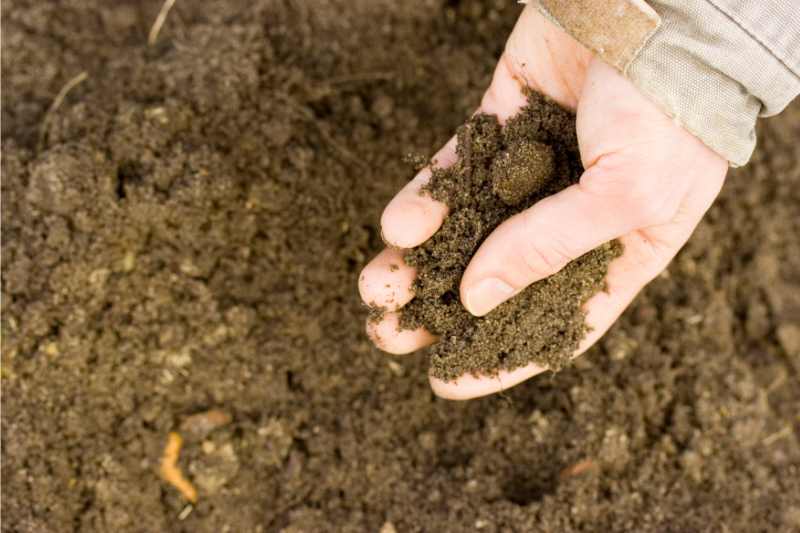
Soil types fall into four categories: loam, clay, sand, and silt. Each retains and drains water differently, but loam is considered the healthiest, most fertile type and is a balanced mixture of all the other types.
Clay soils are known to hold water well – almost too well. This is because clay particles are extremely small and form a compact layer that doesn’t allow water to escape. To avoid runoff and pooling, watering sessions should be shorter – around 15 minutes – and more frequent until the desired amount of 1 to 1.5 inches of water is reached. This gives the soil more time to absorb the water.
Sandy soils absorb water well but drain quickly, thanks to the large size of the particles. Give soil high in sand ⅓ inch of water three times a week.
Silty soils are prone to erosion, so you must be especially careful not to overwater. In terms of water retention, they tend to drain better than clay soils but less quickly than sandy soils. Water silty soils twice a week with ½ inch of water each time.
Loamy soil combines sand’s drainage qualities and clay’s water retention qualities. Lawns with loamy soil need about ½ inch of water twice a week.
If you don’t know your soil type, get a soil test with your local extension office. It will tell you the texture of your soil and what amendments could be used to improve it.
Pro tip: To test your soil’s moisture levels, press the tip of a screwdriver into your soil. It should easily penetrate the surface to a depth of 6 to 8 inches. If it’s hard for the screwdriver to break through the soil, that means the soil is dry, and you should adjust your watering schedule accordingly.
Water According to Grass Type
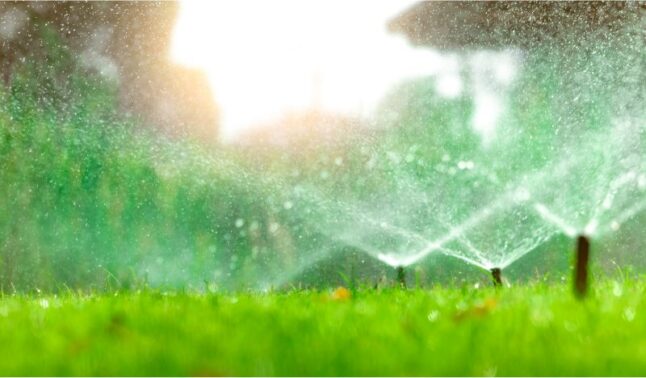
Think of your grass type when calculating how often and how much to water your lawn. Whether your grass is warm-season or cool-season, its needs will need to be considered.
Cool-season grasses typically require 1 inch to 1.5 inches of water weekly. Water three times a week in equally spaced intervals. They may need even more water during summer to prevent dormancy. Some common types include:
- Kentucky bluegrass
- Fine fescue
- Tall fescue
- Perennial ryegrass
- Bentgrass
Warm-season grasses need less water than cool-season grasses, which is typically about ½ inch to 1 inch of water weekly. Water any of the following types once or twice a week:
- Bermudagrass
- St. Augustinegrass
- Zoysiagrass
- Centipedegrass
- Bahiagrass
- Buffalograss
FAQ About Watering Your Grass
What Is the Best Irrigation System to Conserve Water?
A drip irrigation system can help you significantly reduce water waste. These systems disperse water slowly and at the plant’s root zone, where plants need it the most to develop healthy, deep roots. Installing an automatic system can further help you reduce your water bill.
What Are Some Other Ways to Conserve Water?
Landscaping with native plants, adding hardscapes to your yard, xeriscaping, installing artificial turf, or planting groundcovers are effective ways to protect the planet and conserve water. All approaches are low-maintenance and require minimal or no watering.
What Sprinkler System Is Best to Water Your Grass?
Sprinklers are not a one-size-fits-all solution. Your selection should take into account your yard’s size and shape, water pressure, and soil type.
That said, here are the most common sprinkler system options on the market:
- In-ground sprinklers are installed under your lawn (yes, in the ground) and can help avoid runoff when placed correctly. An in-ground sprinkler with a smart controller is your best bet for watering your lawn in the most time- and water-efficient manner.
- Pulsating systems let water out in spurts at a high velocity. The powerful spurs of water mean less water loss due to wind.
- Oscillating sprinklers notably have a long plastic or metal tube with holes that spray a gentle arc of water back and forth.
- Sprinkler hoses work best for long strips of garden or flower beds. They lie on the ground, and the holes along the side allow for more drip irrigation, which is better for conserving water.
- Traveling sprinklers are tractor-shaped and hook directly to your garden hose and will move across your lawn flinging water in a circular motion.
When Is the Best Time to Water Other Plants?
The best time to water your garden, whether it’s a vegetable garden, flower bed, or container garden, is the same as the best time to water your grass – in the early morning.
Garden plants face the same challenges as grass when it comes to watering, including water loss from evaporation and the risk of fungal diseases from overwatering.
Why Is It Important to Monitor My Lawn?
Like any living organism, your lawn requires monitoring to ensure it stays healthy. If your grass appears squishy, limp, yellow, or brown, or you notice signs of moss or algae, it’s time to revisit your watering schedule. Overwatered or underwatered grass also bounces back much slower after mowing or walking on it.
Instead of giving your grass a set amount of water on a schedule, it’s best to let its needs guide you. As soon as you see signs of stress, change your approach and try again.
Leave Your Yard in a Pro’s Hands
Nurturing a lush, vibrant lawn and meeting its watering needs requires time, effort, and commitment. But if there are a million other things you’d rather do with your time, contacting a lawn care pro in your area could be just what you need to achieve a thriving lawn.
Whether you need help watering, mowing, edging, or trimming your lawn, these pros can assist you in many different ways. What’s stopping you from reaching out today?
Main Image Credit: nenovbrothers / Canva Pro / License